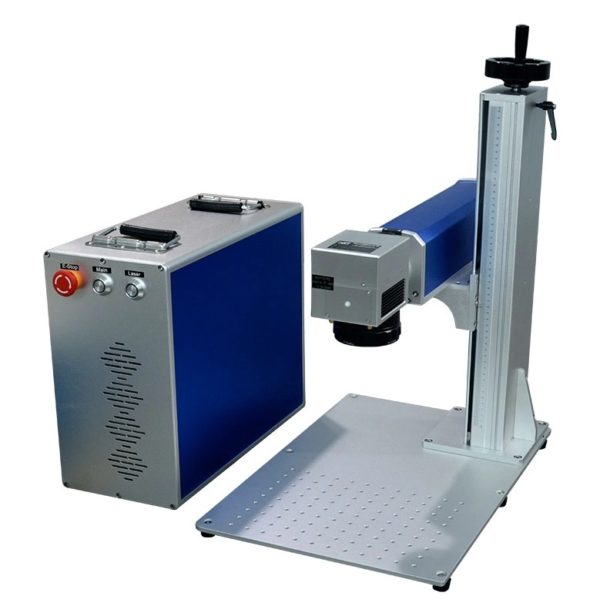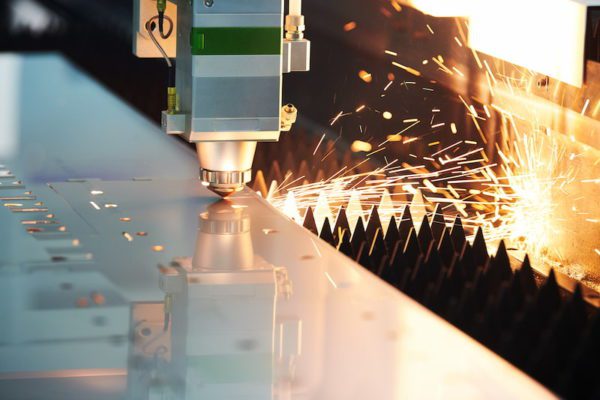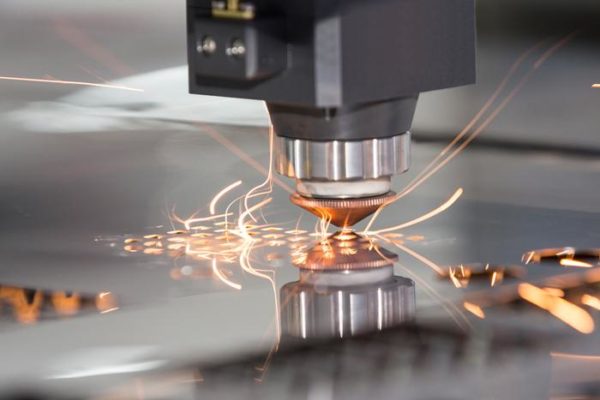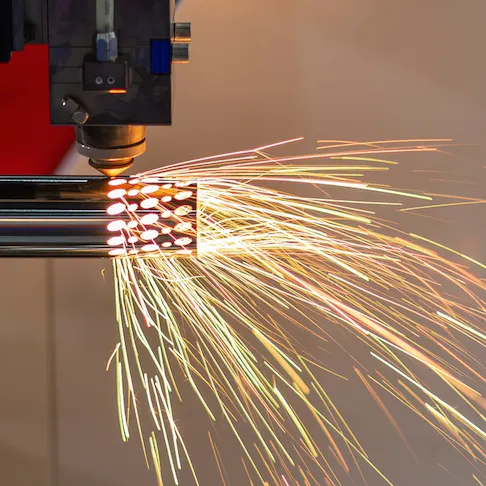Understanding Fiber Lasers: A Comprehensive Guide to Their Mechanisms, Advantages, and Applications
Fiber lasers are an important technology that has been widely adopted in various industries. They have significant advantages over traditional laser technologies, such as precision, speed, and cost-effectiveness. This article will provide a comprehensive guide to fiber lasers, including their mechanisms, advantages, and applications.
What are Fiber Lasers?
Fiber lasers are a type of laser that uses an optical fiber as the gain medium. The fiber is doped with rare-earth elements, such as erbium or ytterbium, which are then excited by an external energy source. This excitation causes the atoms to release photons, resulting in a laser beam.
Fiber lasers are superior to other types of lasers in many ways. They are more efficient, have higher beam quality, and are easier to maintain. They are also more compact, making them ideal for applications where space is limited.

What Kind of Material Can be Marked by a Fiber Laser Marking Machine?
Fiber laser marking machines are versatile tools that can mark a wide range of materials with precision and accuracy. Some of the most commonly marked materials include:
1. Metals:
Fiber laser marking machines are particularly well-suited for marking metals such as steel, aluminum, copper, and brass. They can create high-contrast marks on the surface of these materials, making them ideal for use in the automotive, aerospace, and industrial manufacturing industries.
2. Plastics:
Fiber lasers can mark a variety of plastic materials, including PVC, acrylic, and polycarbonate. They can produce permanent, high-quality marks on plastic parts, making them useful in the electronics, medical device, and consumer goods industries.
3. Ceramics:
Fiber lasers can create precise, high-contrast marks on ceramics such as porcelain, stoneware, and earthenware. These marks are resistant to wear and tear, making them ideal for use in the ceramics industry.
4. Glass:
Fiber lasers can mark glass materials, including borosilicate glass and tempered glass. They can create precise, permanent marks on the surface of the glass, making them useful in the automotive, electronics, and medical device industries.
5. Organic materials:
Fiber lasers can also mark organic materials, including leather, wood, and paper. They can produce high-quality, detailed marks on the surface of these materials, making them ideal for use in the fashion, packaging, and printing industries.
Applications of Fiber Lasers
Fiber lasers have a wide range of applications across different industries due to their unique properties such as high precision, efficiency, and reliability. Here are some common applications of fiber lasers:
1. Industrial Manufacturing:
Fiber lasers are used extensively in industrial manufacturing processes such as cutting, welding, and drilling. They are capable of cutting through a variety of materials including metals, ceramics, plastics, and composites.

2. Medical:
Fiber lasers are used in the medical industry for cutting and welding surgical instruments, as well as for marking medical devices and implants with identification numbers or barcodes.
3. Automotive:
Fiber lasers are used for welding and cutting automobile parts such as body frames and engine components, as well as for marking parts with identification codes and logos.
4. Aerospace:
Fiber lasers are used in the aerospace industry for welding and cutting aircraft parts such as wings and fuselages. They are also used for marking parts with identification numbers and logos.
5. Jewelry:
Fiber lasers are used for engraving and marking jewelry, such as rings and pendants, with intricate designs and personalization.
6. Electronics:
Fiber lasers are used for cutting and marking electronic components such as circuit boards and microchips.
7. Packaging:
Fiber lasers are used for marking and engraving packaging materials such as boxes, cartons, and bags.
8. Textile:
Fiber lasers are used for cutting and marking textile materials such as fabrics and leather.
Overall, fiber lasers have a broad range of applications across different industries due to their precision, speed, and versatility, making them a popular choice for many manufacturing and processing tasks.

Advantages of Fiber Lasers
Fiber lasers have become increasingly popular in various industries due to their numerous advantages over other laser types. Some of the advantages of fiber lasers include:
- High efficiency: Fiber lasers have an efficiency rate of up to 70%, which means that they can convert up to 70% of the electrical energy into laser energy. This high efficiency results in lower power consumption, reduced operating costs, and less heat generation.
- High beam quality: Fiber lasers produce a high-quality laser beam that is well-suited for precision applications. The beam is typically characterized by a near-perfect Gaussian profile, high beam quality, and a small beam diameter.
- Long life: Fiber lasers have a long operating life, with some models capable of running for up to 100,000 hours before needing maintenance. This extended life span reduces maintenance costs and downtime.
- Versatility: Fiber lasers are versatile and can be used for a wide range of applications, including cutting, welding, marking, and drilling. They can also be used to process a variety of materials, including metals, plastics, and ceramics.
- Compact size: Fiber lasers are typically smaller and lighter than other types of lasers, making them easier to integrate into production lines or workstations.
- Low maintenance: Fiber lasers require minimal maintenance compared to other types of lasers. They have no moving parts and do not require the use of expensive optical components, resulting in reduced maintenance costs.
- Reduced operating costs: Due to their high efficiency, low power consumption, and minimal maintenance requirements, fiber lasers have lower operating costs compared to other types of lasers.

Maintenance and Care for Fiber Lasers
To ensure the optimal performance and longevity of fiber lasers, regular cleaning and inspection are essential. Fiber lasers are highly sensitive to dust and other particles, which can accumulate on the lens and affect the laser’s output power. It is important to clean the lens regularly with a lint-free cloth or cotton swab to prevent any buildup.
Other common issues that can affect the performance of fiber lasers include misalignment, thermal lensing, and contamination of the fiber end. It is crucial to address these issues promptly and accurately to prevent any damage to the laser system. Troubleshooting guides are available from most manufacturers and can help identify and resolve common issues.
Proper maintenance and care for fiber lasers are crucial to their longevity and optimal performance. A well-maintained laser can last for many years, reducing the need for costly repairs and replacements.
Why Choose Superior Laser Marking for Fiber Laser Marking and Cutting Services
- Superior Laser Marking offers state-of-the-art fiber laser marking and cutting services that cater to various industries’ needs.
- Our team of experts is committed to providing high-quality, reliable, and cost-effective services, ensuring customer satisfaction.
- We use advanced fiber laser technology, producing precise, permanent markings on various materials.
Contact us today to learn more about how we can help with your laser marking needs for your business.
Future of Fiber Lasers
The potential for fiber laser technology is vast, and the future looks promising. Fiber lasers are continually evolving, with advancements in efficiency and power, making them an attractive alternative to traditional laser technologies. They have already disrupted and transformed various industries, and we can expect to see even more widespread adoption in the future.
Fiber lasers have the potential to be used in various new applications, such as 3D printing, laser cutting, and biomedical engineering, among others. As the technology continues to develop, fiber lasers are likely to become even more versatile, efficient, and cost-effective, making them a top choice for many industries.
Fiber lasers are a powerful and versatile laser technology that has become increasingly popular in various industries. Proper maintenance and care are crucial to ensuring the longevity and optimal performance of fiber lasers. With the potential for new applications and advancements in technology, the future of fiber lasers looks bright. Superior Laser Marking offers top-quality fiber laser marking and cutting services, making them an ideal choice for anyone looking for reliable, cost-effective, and high-quality fiber laser services.
Learn more about different types of laser marking and laser cutting machines in our article.






